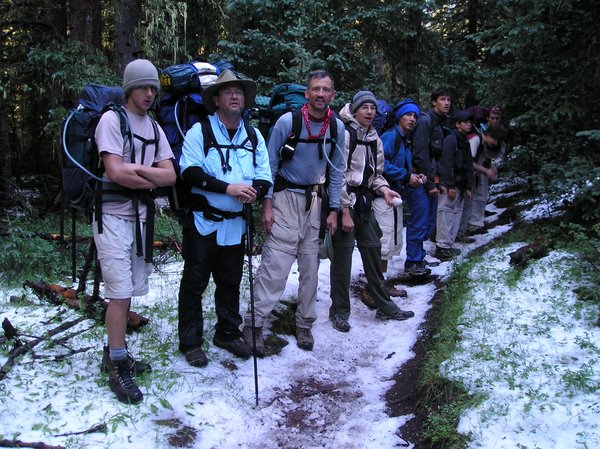 |
| TL;DR |
My first chip was the 68881, the floating point coprocessor the the 68020. We were almost finished with the design and had first silicon when the Apple Macintosh program launched with the 68000. So I had some job security. I was part of the teams that built the 68030, an improved version of the 68020 with architectural modifications from Hewlitt Packard and Apollo engineering workstations. I was building the chips that would run future engineering workstations without those more advanced workstations. We were building the personal computers, engineering workstations and networking infrastructure that would build the next generation yadda yadda yadda. Pretty standard stuff that drove the Technium.
The 68040 was the last Complex Instruction Set Computer (CISC) engine before the Stanford MIPS and IBM Power Reduced Instruction Set Compute (RISC) engines. I worked on the Power PC (PPC) 604 from scratch and then started my own design center so that I could do whatever I want whenever I wanted to do it.
What I did was to build an Internet neuron or networking engine, the 8340. The processor we used for the cell nucleus was the e300, a completely re-engineered PPC603e, or Wart as we called it. We could map this bad boy into any technology and we used it to debug the factory while achieving several speed records. We had the fasted general purpose processor - 300MHz - for just long enough to make a headline in the press (d'oh, the EE Times not the New York Times).
 We bolted the system interface unit (PPC107 aka Grackle aka the connectivity engine) to the bottom of the processor which became the engine and drive train for high end embedded (not visible to most humans) applications like Cisco routers and switches. By this time I had a large design team so I convinced several unsuspecting Vice Presidents that I was going to build the next generation compute engine that met their heterogeneous and contradictory requirements. I told the team to build whatever they wanted and I would shield them from the harsh light of reality - I had fibbed to everyone. But there are like 200 different versions of the 8300 platform (called a System on a Chip or SoC). I don't even know what an 8306 is but I know exactly what it looks like. It is a 603e bolted to a 107
We bolted the system interface unit (PPC107 aka Grackle aka the connectivity engine) to the bottom of the processor which became the engine and drive train for high end embedded (not visible to most humans) applications like Cisco routers and switches. By this time I had a large design team so I convinced several unsuspecting Vice Presidents that I was going to build the next generation compute engine that met their heterogeneous and contradictory requirements. I told the team to build whatever they wanted and I would shield them from the harsh light of reality - I had fibbed to everyone. But there are like 200 different versions of the 8300 platform (called a System on a Chip or SoC). I don't even know what an 8306 is but I know exactly what it looks like. It is a 603e bolted to a 107We built elf, the cute little CPU architecture that devoured everything in its path. We could re-design this little gem and have it in silicon before the other chip architects could get back from lunch and log in to their email and read my cover story about how my little chip would never compete with their monster machine. Then we replaced their little hobby project in every embedded socket on earth. That's how I roll. The 8572 [right] is an internet neuron or computational internet protocol nexus. Your packets cannot get to your browser without going through about 10,000,000 of these at the edge of the internet - all the edges of the internet (the core of the net is fiber and mega-machines).]
No one has ever been able to figure out exactly what I am really up to so don't worry about not being able to keep up. Just ask me for an ad hoc rumination and I will talk until you walk off shaking your head. The next sentence is a lie. The previous sentence is true. I am available in three flavors, Kirk 1.0, Kirk 2.0 and Kirk 3.0. Check your email for new releases.
If you have a couple of hours I can explain what this picture means.




No comments:
Post a Comment